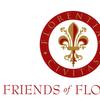'Archive of the World' Explores the Complex Dynamics of Spanish America at LACMA
- May 25, 2022 19:39
From June 12 to October 30, 2022, the Los Angeles County Museum of Art (LACMA) presents Archive of the World: Art and Imagination in Spanish America, 1500–1800. Grounded in LACMA’s collection of Spanish American art formed largely in the last 15 years, the exhibition features over 90 works in a range of media—paintings, sculptures, textiles, and decorative arts—including over 20 recent acquisitions that will be on view for the first time. The exhibition emphasizes the complex dynamics that led to the creation of these stunning artworks, underscoring the generative power of Spanish America and its central position as a global crossroads.
The exhibition is curated by Ilona Katzew, curator and department head of Latin American Art at LACMA. Archive of the World is accompanied by a major catalogue.
After the Spaniards began colonizing the so-called New World in the late 15th century and set out to spread Christianity, artists across Spanish America drew from a range of traditions-Indigenous, European, Asian, and African-reflecting the interconnectedness of the world. The Spanish conquest of the Philippines in 1565 inaugurated a commercial route that linked Asia, Europe, and the Americas. Private homes and civic and ecclesiastic institutions in Spanish America soon teemed with imported and local objects. This confluence of riches signaled the status of the Americas as a major cultural and commercial hub-what one author described as "the archive of the world."
"Spanish America was neither a homogeneous nor a monolithic entity, and local artists were not passive absorbers of foreign traditions," said Ilona Katzew. "Without ignoring the profound violence that marked the process of conquest and colonization, the exhibition and accompanying catalogue emphasize the intricate social, economic, and artistic dynamics that led to the creation of astounding artworks within the budding new societies."
"We are proud to share our important holdings of viceregal art with the public," said Michael Govan, LACMA CEO and Wallis Annenberg Director. "This exhibition and its accompanying publication vividly exemplify our desire to advance new art historical scholarship by displaying materials that tell a more inclusive story of human creativity, reflecting the progressive opening of the art historical canon."
Exhibition Organization
The early modern era (c. 1500-1800) was a period marked by imperial expansionism, conquest, and colonization. Cataclysmic social and geopolitical shifts brought people into closer contact than ever before—in real and imagined ways propelling the creative refashioning of the material culture that surrounded them. The central, overarching subject of this exhibition-which reflects the impetus behind the formation of the collection—is the interconnectedness of cultures and ideas in the early modern world. The exhibition is organized in five thematic sections that speak to this prevailing notion.
Eyes of the Imagination: Envisioning the Divine. After the Spanish conquest, devotional images became essential to evangelize the Indigenous population and instruct in matters of the Catholic faith. While European artists initially supplied images, soon local practitioners from different backgrounds produced devotional works to fulfill the growing demand. Paintings were routinely commissioned for altarpieces (retablos) and monastic cycles. The church played an important role in spreading particular subjects, but artists retained significant agency, often grounding their compositions in local histories.
Intimate Faiths. Faith in Spanish America was both public and profoundly personal. Some images demanded close scrutiny to instruct, serve as mnemonic tools, and awaken pious feelings-their small size helping to draw the faithful in. At the outset of evangelization, Indigenous artists incorporated ancient materials and techniques to create new Christian objects and assert their own place within the new body politic, as exemplified by the famous 16th-century Mexican "Hearst Chalice." Intimate devotional paintings and sculptures were kept in private domestic chapels (oratorios) and treasured by the faithful, reflecting their affection for particular saints and wonder working images, while finely rendered badges worn by nuns and friars were pinned to their vestments for all to see, carrying pointed personal and political messages.
Fashioning Identity. This section includes costumes, paintings, and books that demonstrate how dress could powerfully assert social and ethnic differences. For example, clothing is an essential feature of 18th-century Mexican casta (caste) paintings, which depict figures of different races and their children. Since skin color was not a reliable marker, dress-among other elements-reinforced socioracial differences and people's place within the social order. In portraiture, clothing played a key role in conveying the idea of wealth and status, allowing sitters to fashion and refashion their identities and project them onto society.
The Art of Two Artists: The Culture of Copies. The tradition of creating replicas (as well as serial production) was integral to the practice of painting in the early modern world. The Sienese polymath Giulio Mancini (1558-1630) noted that a copy was preferable when painted so dexterously that it tricked the viewer, as it then contained the "art of two artists." The works in this section, from the viceroyalty of New Spain (Mexico), offer powerful visual commentary on the creative process of local painters and their engagement with both local and foreign source material.
New World Emporium. By the 16th century, Spanish America became a center of global trade and a major economic and cultural emporium. With the conquest of the Philippines in 1565, Spain established a sophisticated trade system that linked Asia, Europe, and the Americas. The influx of Asian goods in Spanish America satisfied a growing taste among the elite for these luxury items and inspired the creation of new ones, some entrenched in ancient traditions. This confluence of materials, techniques, and styles gave rise to astonishing new commodities in dialogue with the wider world.
Exhibition Highlights. The exhibition includes a range of materials-costumes, paintings, sculptures, and decorative arts. Among the exhibition's highlights are several new acquisitions, including the monumental Pieta by the Potosf painter Melchor Perez Holgufn, which was restored for the exhibition. A video of the painting's restoration will be accessible via the exhibition and on LACMA's website. Other highlights are a series of works employing shells known as enconchados; these include paintings created in the viceroyalty of New Spain (Mexico), and decorative arts produced in Guatemala for export to Mexico and Lima. The designs referenced a broad repertoire of Indigenous, European, and Asian sources, which were creatively synthesized and recombined by local artists.





















